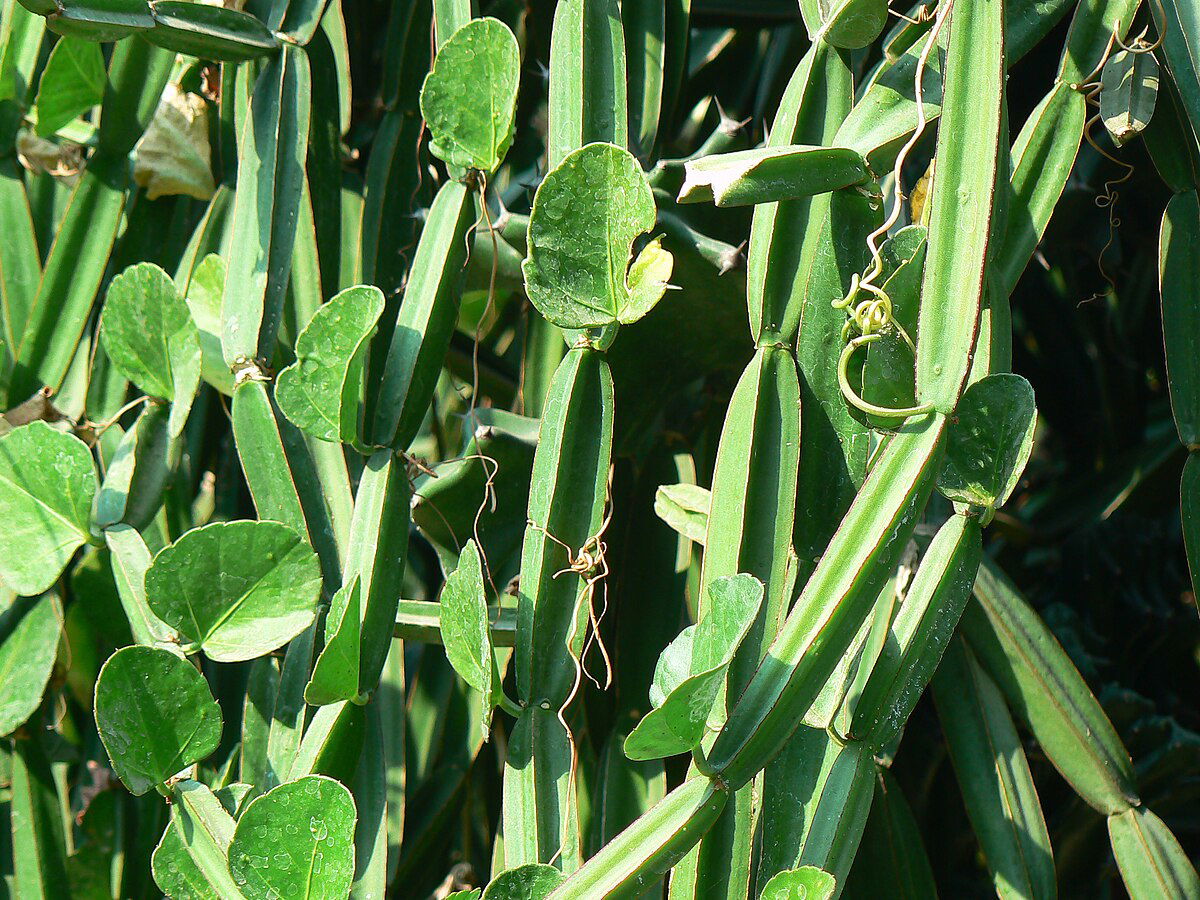
Hadjod, scientifically known as Cissus quadrangularis, is a remarkable plant renowned for its extensive range of uses and benefits. This plant, often referred to by various common names such as Veldt grape, Adamant creeper, and Devil’s backbone, holds a significant place in traditional medicine and modern herbal practices.
Morphological Structure of Hadjod
-
Hadjod is a unique quadrangular, succulent shrubby climber characterized by its distinctive 4-winged internodes and tendrils at the nodes.
-
The stems, joined at the nodes, feature internodes that measure between 8 to 10 cm in length and 1.2 to 1.5 cm in width.
-
This plant produces small, greenish-white flowers that grow opposite the leaves, adding to its unique and intriguing appearance.
Economic Value
The entire Hadjod plant, including its leaves, stems, and roots, holds significant economic value. This plant is utilized in various forms, making it an essential part of the herbal and medicinal industry. Its versatility and benefits have garnered considerable attention, making it a valuable crop for farmers and herbalists alike.
Medicinal Properties
Hadjod is highly esteemed for its extensive medicinal properties. The benefits of this plant are numerous and varied, including:
-
Bone Health: Promotes the healing and repair of bone fractures.
-
Joint Pain Relief: Alleviates pain in the joints.
-
Menstrual Regulation: Helps regulate menstruation.
-
Chronic Condition Prevention: Offers protection against heart disease, diabetes, stroke, hemorrhoids, gout, asthma, and allergies.
-
Weight Management: Assists in weight loss.
Herbal Preparations
Hadjod is commonly prepared in various forms to harness its medicinal benefits:
-
Asthisamharaka Juice
-
Powder
-
Decoction
Cultivation Practices
-
Varieties: Currently, there are no named varieties of Hadjod, making it a unique and singular plant in its category.
-
Climate: Hadjod thrives in warm tropical climates, flourishing up to an elevation of 500 meters. This adaptability to tropical conditions makes it suitable for cultivation in various regions with similar climates.
-
Soil: This versatile plant can grow in almost any type of soil, provided there is adequate water drainage. However, it shows a preference for loamy soil with a pH range of 5.5 to 7.5. The soil's ability to retain moisture while ensuring proper drainage is crucial for the healthy growth of Hadjod.
-
Propagation: Hadjod is commercially propagated using mature stem cuttings that are 30 cm long and have two nodes. This method ensures the plant's vigorous growth and sustainability, making it an efficient way to cultivate Hadjod on a larger scale.
-
Spacing and Planting: During the kharif season (June-July), stem cuttings are planted in pits measuring 15×15×15 cm, with a spacing of 30×30 cm. The pits are filled with a nutrient-rich mixture comprising vermi-compost, farm yard manure (FYM), sand, and bone meal in equal proportions. To provide support, bamboo sticks are used, helping the plant climb and grow effectively.
-
Manuring: After planting, farm yard manure is applied at a rate of 10-12 tonnes per hectare to enhance growth and ensure the plant receives the necessary nutrients for robust development.
-
Harvesting and Yield: Hadjod is a perennial crop, meaning it continues to grow and yield for multiple years. The stems are typically cut and air-dried 11 months after planting. The whole plant can be harvested after two years of growth, providing a substantial yield for farmers and herbalists.
Farmers and herbal enthusiasts looking to cultivate a plant that offers both health benefits and economic value will find Hadjod to be an excellent choice. Its growth habit, adaptability, and medicinal properties ensure that it remains a staple in both traditional and modern herbal practices.
















